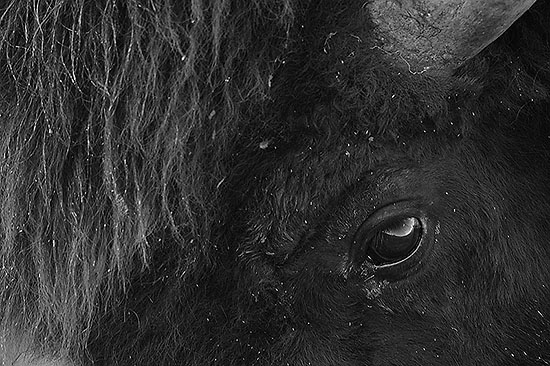Yellowstone National Park is the oldest and probably also one of the best-known national parks in the entire world.
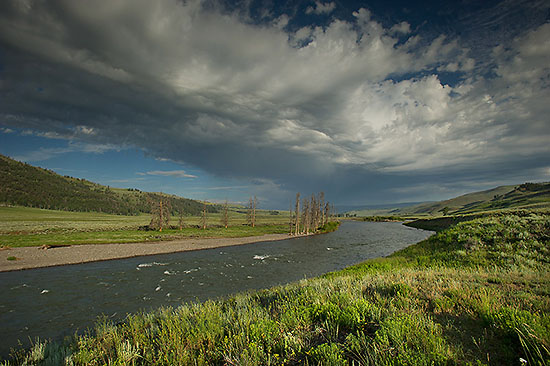
Famously labelled ‘America’s Best idea’, Yellowstone became the world’s first national park in 1872. Yellowstone National Park spans an area of 8,983 square kilometres, comprising lakes, canyons, rivers and mountain ranges. It is situated principally in Northwest Wyoming and partly in South Montana and Eastern Idaho. It includes the greatest concentration of hydrothermal features in the world. It harbours one of the world most famous geysers, the Old Faithful. Another remarkable feature is that Yellowstone Lake is one of the largest high-elevation lakes in North America. The park is also well known for holding really spectacular numbers of large mammals, of which many of them are relatively easy to observe.
I spent four days within the park during the second week of July 2015. From our first moments inside the park we were struck by the huge numbers of large and smaller mammals. Bison's are a common sight in the larger open grassland areas, as well as Wapitis and Pronghorn, a North American Antelope species. But much more had to come yet …

Hydrothermal activities
Yellowstone is situated in a region that has been volcanically and seismically active for tens of millions of years. Tectonic movement of the North American Plate has thinned Earth’s crust in the area, forming a hot spot. The Yellowstone Caldera, the largest supervolcano on the continent, is considered as an active volcano. It has erupted with tremendous force several times in the last two million years. Half of the world's geothermal features are in Yellowstone, fuelled by this ongoing volcanism.
We started our trip in the North of Yellowstone and paid a visit to the Mammoth hot springs. Under here an image from the surrealistic landscape at the hot springs. Every week a dozen tonnes of travertine is deposited in the area, making the terraces about 30 centimetres taller in one year!

In the entire park, at almost every viewpoint one can notice somewhere fog plumes coming from local thermal activities. The weirdest coloured lakes with hot water, boiling pools, muddy melting pots, weird travertine terraces, erupting geysers, you name it… and it occurs in Yellowstone. Here's an image from the hydrothermal activities around Yellowstone Lake.
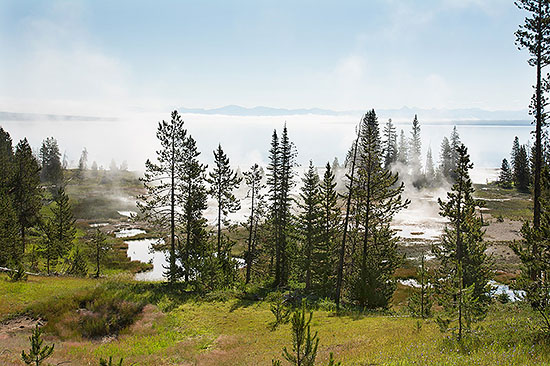
Under here an images taken along the Firehole River. The next two images show some smaller pools in the area.
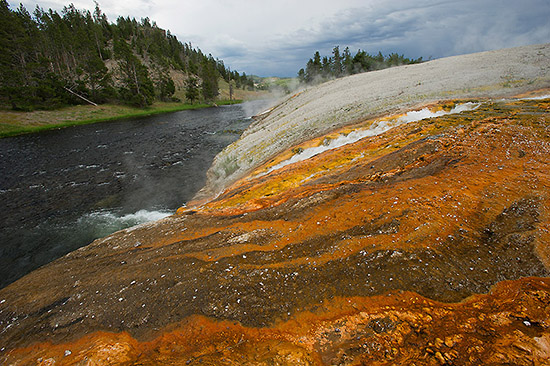
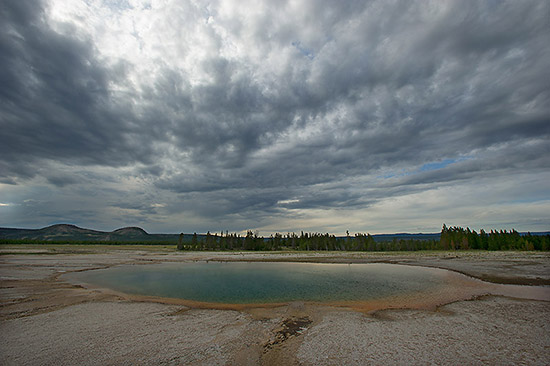
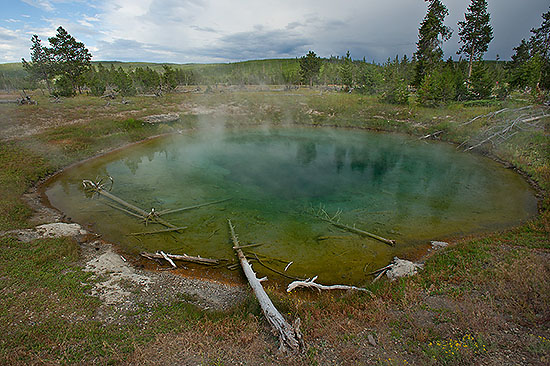
Under here a series of pictures from the Grand Prismatic, one of the most spectacular and large hot water pools.



It was amazing to see how some animals, such as a Columbia Spotted Frog or a Darkling Beetle sometimes ventured into the steaming hot pools.


Old Faithful
Old Faithful is a geyser, owing its name to its very regular eruptions. While the legend that Old Faithful once blew off every hour, never held true. But he geyser’s eruptions did in fact, once average close to sixty minutes apart. Due to earthquakes rattling its underground plumbing over the years, the geyser now performs every 92 minutes on average. Under here an image from the eruption.
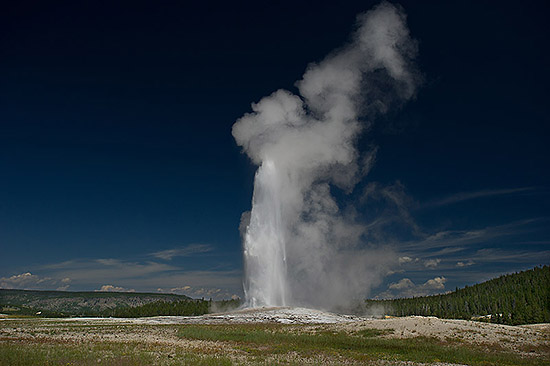
Large Mammals
As soon as one enters the park, one can observe large deer (Elk) or Bison along the roads. In the more forested parts, one frequently encounters a few individuals or small parties of Bison. As soon as one reaches the large valleys such as Lamar Valley in the North of the Park, or Hayden Valley mind-blowing herds of Bison can be seen grazing in the wetlands and in the surrounding sagebrush grasslands. Under here an image taken in the evening at Lamar Valley. During the hot summer months the herds often spend the day in the cooler shade of the forest, but go out foraging in the lush valley grasslands during the late afternoon. The image gives an idea of how it must have felt hundreds of years ago, when gigantic troops of wild Bison still roamed around in the prairies of the USA.
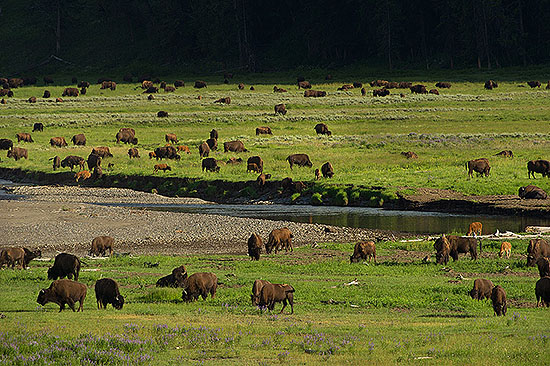
Yellowstone holds the largest population of Bison, Bison bison. The population was estimated in 2014 at 4900 individuals. Moose, Alces americanus, Elk, Cervus elaphus, and Mule deer, Odocoileus hemionus also occur within the park boundaries. However, the Moose Population has suffered severe losses during the great forest fires of 1988 and is only recovering slowly (only about 30 to 40 individuals occur nowadays within the park boundaries).
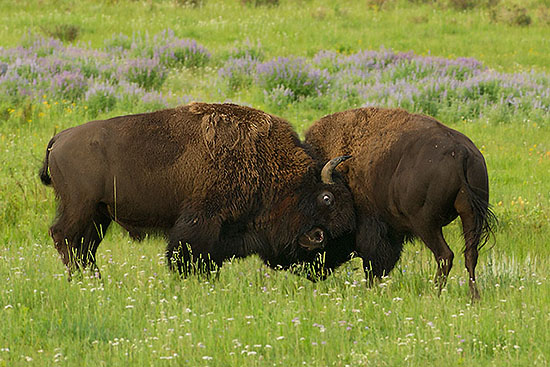

Another grazer which is doing very well inside the park, is the Pronghorn, Antilocapra americana. The Pronghorn is often cited as the second fastest mammal or in the world, after the Cheetah. The speed of its sprint can reach 100 kilometres per hour, but the species is also known to be able to hold on high speeds over long distances. It can keep up a speed of 70 km/h over a distance of more than ten kilometres. Under here an image of a male Pronghorn.

Three other hoofed mammals, which one can observe in the steep rocky areas are the Mountain goat, Oreamnos americanus and Bighorn Sheep, Ovis Canadensis. Under here an image from a female Bighorn Sheep.
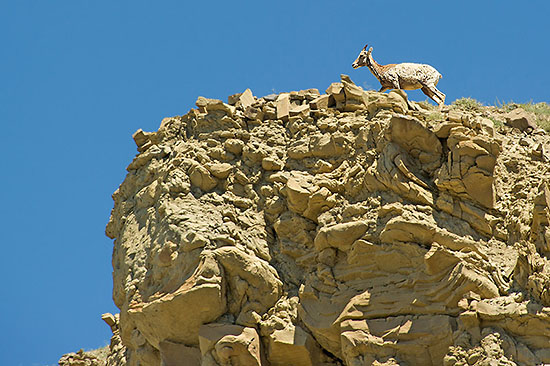
Smaller mammals, such as several species of squirrels and ground squirrels are also frequently encountered. Under here Uinta Ground Squirrel, Urocitellus amratus photographed in the grasslands close to the Mammoth Hot springs.
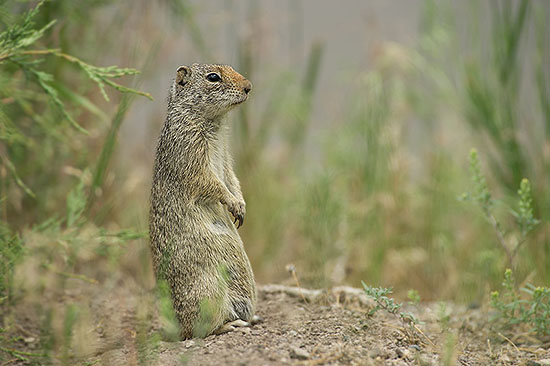
We were also really surprised by the relative ease to see Black Bear, Ursus americanus in Yellowstone (image under here). We had daily encounters, with a maximum of two sightings in one day.

Red Foxes, Vulpes vulpes seem also to be pretty common. We had three encounters with them during our stay. Under here a Fox crossing a large scree slope during the evening.

Grizzly Bear, Ursus arctos horribilis and Wolf, Canis lupus are tougher to observe during the hottest months in Yellowstone. As the large herds of Bison and Elk, move up towards the alpine zone during summer, the bears and wolves follow their prey higher up. In the alpine zone the landscape is more scattered with trees and there are less viewpoints where one can clearly overview large open areas. The best chance to observe Wolves and Grizzly Bear is to get up very early and to be at first light in the large open valleys (Lamar and Hayden Valley). Under here an image of the vast sagebrush grasslands surrounding Lamar Valley.

We got up three times around 3 a.m. to reach Lamar Valley around 4:30 a.m., a little before sun comes up. We were lucky to observe on the first attempt a Grizzly Bear for more than twenty minutes, while he was walking along a ridge next to the road (image under here).
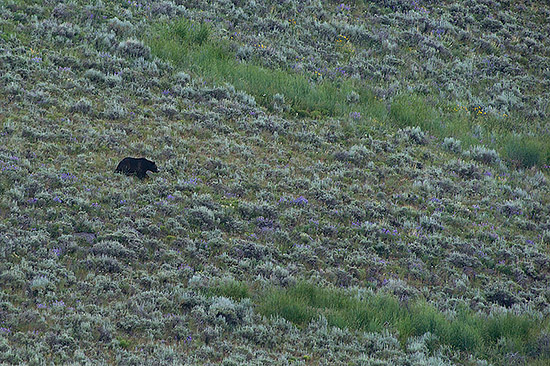
On our third attempt, we were very lucky to observe two Wolves at a Bison carcass. Although Wolf is a little tougher to observe in Yellowstone then Brown and Black Bear, Yellowstone is probably one of the easiest places in the world to observe Wolves in the Wild. In many of the Palearctic countries, Wolves are extremely shy, due to the fact that they are still persecuted in many countries. Under here a wolf with a nice little piece of meat. The next image shows him sent-marking.

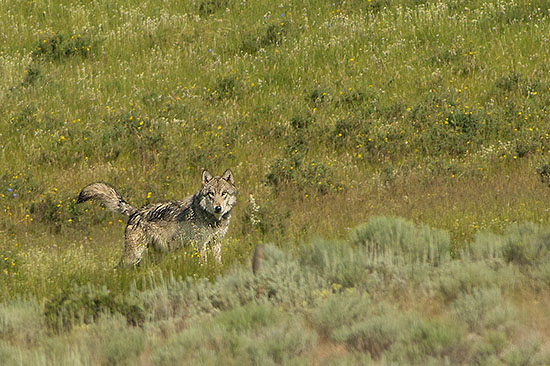
We finally end with two images of the omnipresent mammal of Yellowstone, the Bison.

